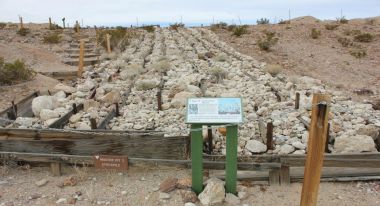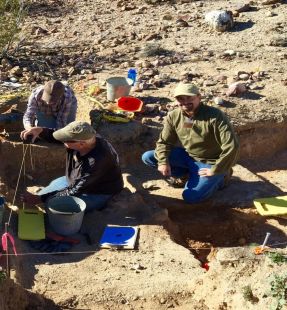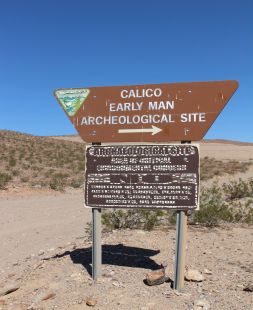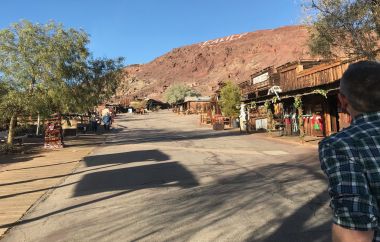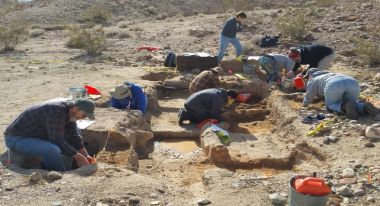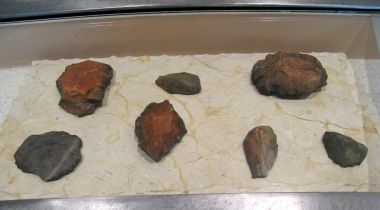The Calico Early Man Site is an archaeological site in an ancient Pleistocene lake located near Barstow in San Bernardino County in the central Mojave Desert of southern California. This site is on and in late middle-Pleistocene fanglomerates (now-cemented alluvial debris flow deposits) known variously as the Calico Hills, the Yermo Hills, or the Yermo formation. Holocene evidence includes petroglyphs and trail segments that are probably related to outcrops of local high-quality siliceous rock (primarily chalcedony in freshwater limestone).
The Calico Early Man Site includes:
Artifacts of the Lake Manix Lithic Industry (LMLI) found on and just below the surface at elevations greater than 543 m (1,781 ft), the shoreline elevation of a 236 km2 (91 sq mi) freshwater Pleistocene lake which emptied approximately 18,000 years ago.
Material recovered from nested Pleistocene alluvial deposits stratigraphically beneath a 100,000-year-old soil profile: a 'rock ring' (not a fire hearth) dated to 135,000 years by thermoluminescence (TL), about 200,000 years by uranium-series analysis, and about 197,000+/- 20,000 years by surface beryllium-10 (10Be) dating.
The Rock Wren Biface, a large well-formed biface tool recovered from a younger nested-inset alluvial deposit at Calico: dated by sediment thermoluminescence (sediment TL) to 14,400 ±2,200 years year ago. A test pit located near the discovery location is currently being excavated and is yielding artifactual material.The tools and flakes of LMLI and those found in the nested inset known as the Rock Wren Locality were probably made by modern man (Homo sapiens sapiens).
The Calico Early Man Site includes:
Artifacts of the Lake Manix Lithic Industry (LMLI) found on and just below the surface at elevations greater than 543 m (1,781 ft), the shoreline elevation of a 236 km2 (91 sq mi) freshwater Pleistocene lake which emptied approximately 18,000 years ago.
Material recovered from nested Pleistocene alluvial deposits stratigraphically beneath a 100,000-year-old soil profile: a 'rock ring' (not a fire hearth) dated to 135,000 years by thermoluminescence (TL), about 200,000 years by uranium-series analysis, and about 197,000+/- 20,000 years by surface beryllium-10 (10Be) dating.
The Rock Wren Biface, a large well-formed biface tool recovered from a younger nested-inset alluvial deposit at Calico: dated by sediment thermoluminescence (sediment TL) to 14,400 ±2,200 years year ago. A test pit located near the discovery location is currently being excavated and is yielding artifactual material.The tools and flakes of LMLI and those found in the nested inset known as the Rock Wren Locality were probably made by modern man (Homo sapiens sapiens).



